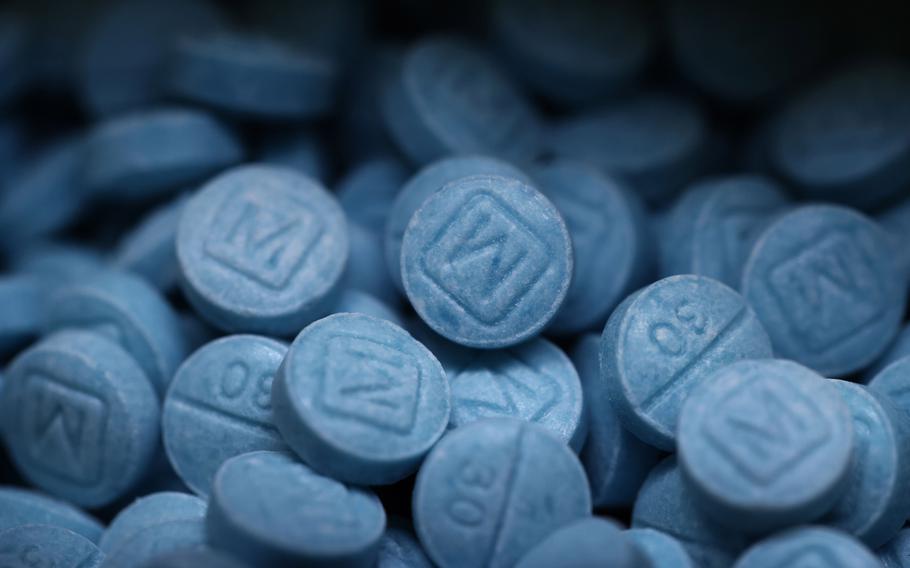
Hundreds of seized fentanyl pills that imitate Oxycodone M30 are kept as evidence at the Drug Enforcement Administration’s Dallas Field Division lab, Aug. 1, 2023. (Tom Fox, Dallas Morning News/TNS)
DALLAS (Tribune News Service) — Fentanyl has ravaged communities, but effects of the drug may extend even beyond humans.
Researchers at Texas A&M-Corpus Christi found traces of human pharmaceuticals, including fentanyl, in dolphins swimming in the Gulf of Mexico. Also detected were a muscle relaxer and an anti-anxiety drug.
The study, which was recently published in the journal iScience, raises concerns about pharmaceutical contamination, public health and the safety of wildlife and waterways. The analysis is the first to confirm the presence of these drugs in live, free-swimming marine mammals, and findings have led to a flurry of headlines in national outlets and science publications.
“You should not be finding human pharmaceuticals in apex predators like dolphins, especially a drug as potent as fentanyl,” said Anya Ocampos, who conducted the study as an undergraduate and is now pursuing a veterinary degree at Cornell University. “This raises a big red flag.”
To begin, researchers collected samples from the blubber of 89 bottlenose dolphins from Redfish Bay and Laguna Madre in Texas and the Mississippi Sound, which stretches from Louisiana to Alabama. Most of the samples were taken from live dolphins using darts affixed with biopsy tips; six samples came from dolphins found dead.
They tested for the opioid fentanyl, a muscle relaxer called carisoprodol, and meprobamate, an anti-anxiety drug. Tests revealed that 30 dolphins contained at least one pharmaceutical in their bodies.
Fentanyl was present in 24 of the dolphins, including all six of the dead animals. Researchers can not say whether fentanyl killed the dolphins, but Ocampos said it might have contributed.
Fentanyl is incredibly strong. As little as two milligrams — as little as 10 to 15 grains of table salt — can kill an adult. It is 50 times stronger than heroin and 100 times more powerful than morphine.
Tissue samples from dolphins in areas with high threat risks, such as oil spills, vessel traffic and algal blooms, showed higher levels of pharmaceutical contamination, researchers noted. One of the dead dolphins with fentanyl in its blubber was found in Baffin Bay in South Texas, within a year of the largest liquid fentanyl drug bust in U.S. history in the neighboring county.
Dolphins do not drink sea water, so the animals likely ingested drugs by eating shrimp or fish, which are also consumed by humans, Ocampos said. Improper or inadequate treatment of wastewater is likely responsible for the flow of the pharmaceuticals into the ocean.
Results indicate that pharmaceutical contamination is a long-standing issue. Roughly 40% of the Mississippi dolphins tested positive for drugs, and those samples were taken from live dolphins in 2013, then frozen for later research, the study notes.
Scientists say they hope the study’s results will drive additional research in the field. Future work could expand the list of drugs tested, including common pharmaceuticals, caffeine and nicotine.
“We hope this is a wake-up call,” Ocampos said, “that people are able to see what is going on in our environment.”
©2024 The Dallas Morning News.
Visit dallasnews.com.
Distributed by Tribune Content Agency, LLC.